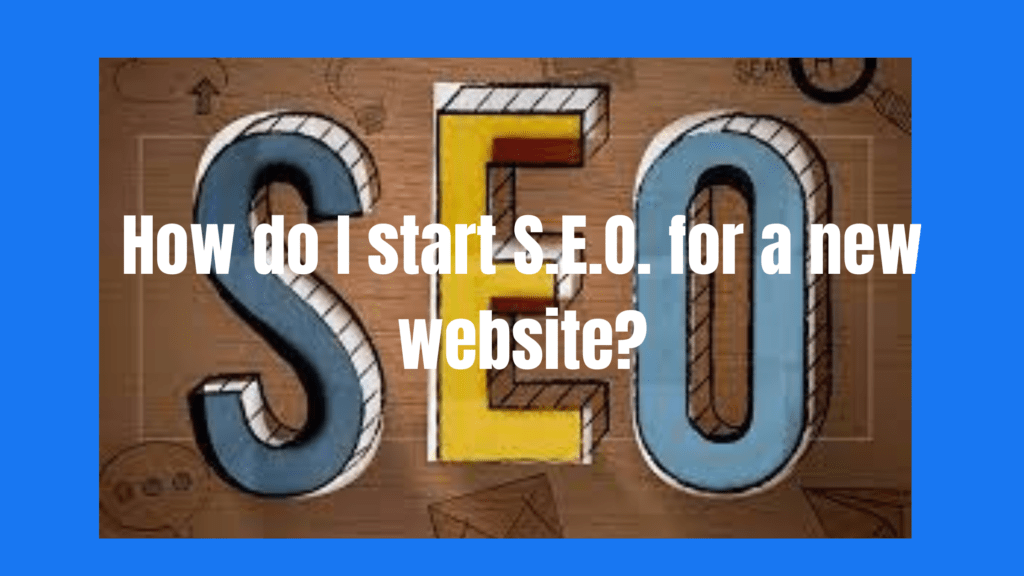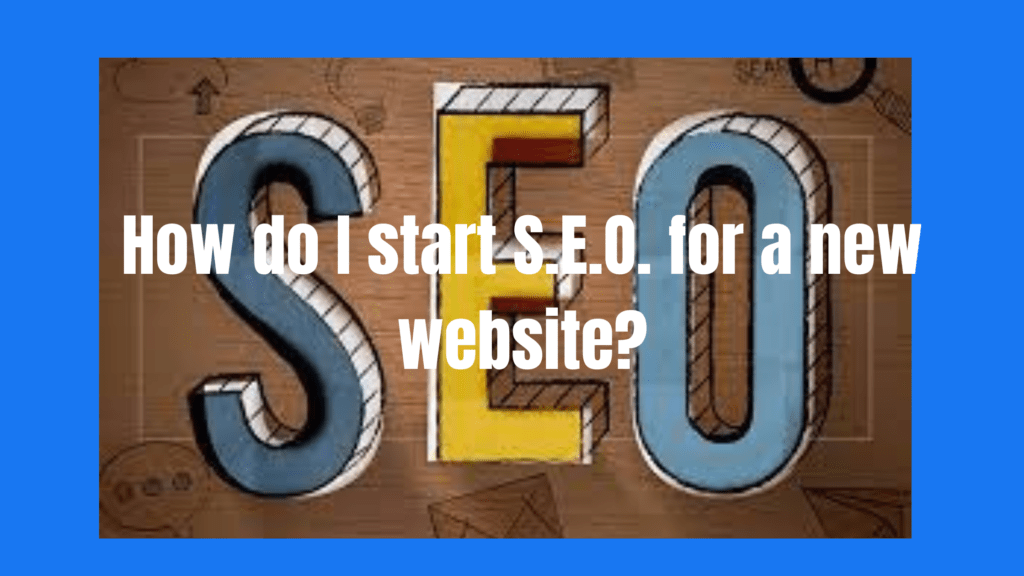
How to start S.E.O. for a new website. Starting an SEO (Search Engine Optimization) strategy for a new website can seem daunting, but it’s a systematic process. The goal of SEO is to make your website more visible to search engines like Google so that when people search for keywords related to your content, your site appears near the top of the search results. Here’s a step-by-step guide to help you get started with SEO for your new website:
1. Keyword Research
Objective: How do I start an S.E.O. for a new website? Identify the terms and phrases that potential visitors use to find content related to your website.
- Tools: Google Keyword Planner, Ahrefs, SEMrush, Moz Keyword Explorer.
- Steps:
- Brainstorm a list of relevant topics related to your website.
- Use keyword research tools to find variations and additional keywords.
- Look for keywords with a good balance of search volume and competition.
- Focus on long-tail keywords (longer, more specific phrases) as they are less competitive and can attract highly targeted traffic.
2. Competitor Analysis
Objective: Understand what your competitors are doing well and identify opportunities to improve your own site.
- Tools: Ahrefs, SEMrush, Moz.
- Steps:
- Identify your main competitors in the search engine results pages (SERPs).
- Analyze their content, backlinks, and overall SEO strategies.
- Look for gaps or weaknesses in their content that you can exploit.
3. On-Page SEO

Objective: How do I start an S.E.O. for a new website? Optimize individual pages on your website to rank higher and earn more relevant traffic from search engines.
- Steps: how do I start an S.E.O. for a new website?
- Title Tags: Ensure each page has a unique, descriptive title that includes your primary keyword.
- Meta Descriptions: Write compelling meta descriptions for each page, including relevant keywords.
- Headings (H1, H2, H3): Use headings to structure your content. The H1 tag should contain the main keyword, and subheadings (H2, H3) should be used for related topics.
- Content: Write high-quality, original content that provides value to your audience. Use keywords naturally.
- URL Structure: Use clean and descriptive URLs that include keywords.
- Internal Linking: Link to other relevant pages on your website to help search engines understand the structure and improve navigation for users.
- Image Optimization: Use descriptive file names and alt text for images to help search engines understand the content of your images.
Yoast Plugin
This is one of the best plugins out side there for on-page Optimization. It’s good for newbies (easy to use).
What you only need to do is to install the plugin and activate. Simple like a b c.
4. Technical SEO
Objective: Ensure that your website is technically sound and accessible to search engines.
- Steps:
- Site Speed: Optimize your site’s loading speed. Use tools like Google PageSpeed Insights to identify and fix issues.
- Mobile-Friendliness: Ensure your site is responsive and works well on mobile devices. Google’s Mobile-Friendly Test can help with this.
- Sitemap: Create and submit an XML sitemap to search engines to help them index your site more efficiently.
- Robots.txt: Use a robots.txt file to guide search engine crawlers on which pages to index.
- HTTPS: Secure your website with HTTPS to improve security and trustworthiness.
5. Content Creation and Blogging
Objective: How do I start an S.E.O. for a new website? Regularly publish high-quality content to attract and engage your audience.
- Steps:
- Blogging: Start a blog on your website and write about topics that interest your audience. Use your keyword research to guide your content.
- Content Calendar: Plan and schedule your content to ensure consistent publishing.
- Evergreen Content: Create content that remains relevant over time to attract ongoing traffic.
-
Visual Content: Incorporate images, videos, infographics, and other visual content to make your posts more engaging.
6. Off-Page SEO
Objective: Build the authority and reputation of your website through external methods.
- Steps:
- Backlink Building: Earn backlinks from reputable websites. This can be done through guest blogging, partnerships, and creating high-quality content that others want to link to.
- Social Media: Promote your content on social media to increase its visibility and attract backlinks.
- Local SEO: If you have a local business, optimize your site for local search by claiming and optimizing your Google My Business listing.
7. Monitoring and Analytics
Objective: How do I start an S.E.O. for a new website? Track your SEO performance and make data-driven decisions.
- Tools: Google Analytics, Google Search Console, Ahrefs, SEMrush.
- Steps:
- Traffic Analysis: Use Google Analytics to track your site’s traffic, including the sources of your traffic and the behavior of your visitors.
- Keyword Rankings: Monitor your keyword rankings to see how your site is performing in search results.
- Backlink Profile: Use tools to monitor your backlinks and ensure they are from reputable sources.
- Search Console: Use Google Search Console to identify any issues with your site and monitor your performance in Google’s search results.
8. Continuous Improvement
Objective: SEO is an ongoing process that requires constant attention and adjustment.
- Steps:
- Content Updates: Regularly update your content to keep it fresh and relevant.
- Technical Audits: Perform periodic technical audits to identify and fix any issues.
- Competitor Analysis: Keep an eye on your competitors and adjust your strategy as needed.
- Algorithm Changes: Stay informed about changes to search engine algorithms and adjust your strategy accordingly.

Conclusion
How do I start an S.E.O. for a new website? Starting an SEO strategy for a new website involves a combination of research, on-page and off-page optimization, technical adjustments, and ongoing monitoring. By following these steps, you can improve your website’s visibility in search engine results, attract more visitors, and ultimately achieve your business goals. Remember that SEO is a long-term commitment, and patience and persistence are key to seeing success.


